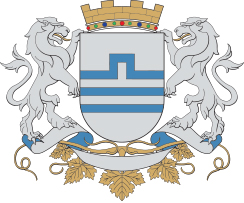History
The City of Podgorica is located at the intersections of several major roads, which run along the basins of the Rivers Zeta, Morača, and Cijevna, into the valley of Lake Skadar and near the Adriatic Sea, in a fertile plain with favourable climate conditions. This area has always been very suitable for the establishment of human settlements since ancient times, and thus settlements existed here even in prehistoric times. The oldest remains of material culture in this area belong to the late Stone Age. Further development have enabled the appearance of organised human settlements that will survive numerous events.In the Illyrian period, in the area of the Zeta-Bjelopavlići valley there lived members of two Illyrian tribes – the Labeati and Docleati, which influenced in the most direct way the establishment of the tribes of that time. The Labeati inhabited the area from Shkodra in Albania to today’s Podgorica. They had their own fortress Meteon, known today as Medun, and a developed organisation of life, in particular their military. The Docleati also inhabited the Zeta Valley, and experienced fast economic growth due to the fertile plain and favourable position in terms of geography and roads. Their main settlement was Doclea. The city was situated around three kilometres northwest of today’s Podgorica. Urban Doclea was adjusted to the configuration of the terrain. For that time, it was a big city with a population of 8–10,000, with all their basic communal issues resolved. The relatively dense population density in an area no more than 10 square kilometres was conditioned by its geographical position, favourable climate, economic conditions, and defensive positions, especially important at that time.



The name Podgorica was first mentioned in 1326 in a court document in the Kotor archives. Podgorica, or the previous settlement of Ribnica, was economically strong. Trade routes between Dubrovnik and the state of Nemanjić, which were very developed, were maintained though a road which led to Podgorica through Trebinje and Nikšić. Since it was at the busiest crossroads, Podgorica was the centre of a very lively flow of goods, merchants, couriers, and other travellers, which encouraged its development, economic power, military strength, and strategic significance. With the Ottomans’ occupation of Podgorica in 1474, the economic, cultural, and artistic rise of the city was halted. The Ottomans built a large fortress in Podgorica, and the existing settlement, with its highly developed trading connections, became the main defensive and offensive bastion against disobedient tribes. From such a fortified city, with towers, gates, and defensive walls, the Turks resisted all attacks.
Based on the Decision of the Congress of Berlin in 1878, Podgorica was annexed into Montenegro. That marked the end of four centuries of Ottoman occupation and the beginning of a new age in the development of both Podgorica and Montenegro. The city was developing relatively fast and grew to become a strong trading place. The first forms of capital concentration appeared and the Zeta Savings Bank, the first significant financial institution was established in 1904, and in 1902 Podgorica got its first significant business enterprise –– the Tobacco Factory.
In the period between the two world wars Podgorica had a population of approximately 13,000.
In World War II it was bombed over 70 times and razed to the ground. In all, 4,100 civilians were killed, and the city was liberated on 19 December 1944.
Under the name of Titograd, on 13 July 1946, it became the capital of the Republic. This marked the beginning of a new life. In the forthcoming period, overall transformation of the city was achieved. Its material, personnel, and scientific and technological potential was increased, education was greatly strengthened, many new cultural and health institutions were founded, and the city was connected by modern highways and air connections with the entire country and abroad. Thus Titograd became the commercial, social-economic, and cultural centre of Montenegro.
It regained the name Podgorica on 2 April 1992.
In the referendum on the independence of Montenegro, held on 21 May 2006, by the majority will of the citizens, Montenegro restored its independence. Podgorica has become the capital of the state of Montenegro.











